A Regional Guide to Garden-Friendly Birds—and How to Attract Them to Your Backyard
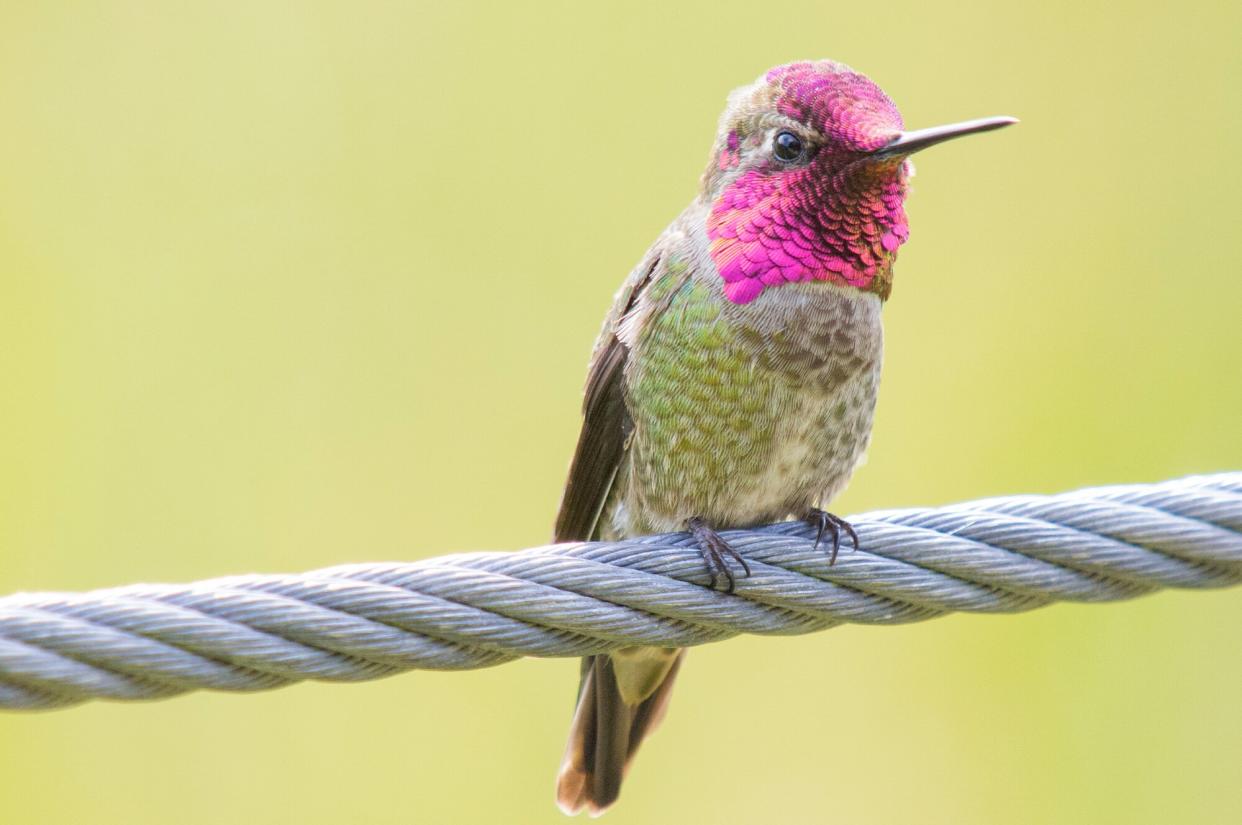
Cultura RF/Jouko van der Kruijssen / Getty Images
TABLE OF CONTENTS
On This Page
Northeast
South
Southwest
Great Plains and Midwest
Northwest
Local birds and your backyard landscaping are closely connected: Birds help your yard by controlling insect populations and pollinating plants, and, in turn, it provides them with their favorite foods, water, and a safe environment that supports the health of their populations.
If sitting in your backyard (with a pair of binoculars in hand!) and watching these avians work and play brings you peace and joy, you're likely interested in identifying them. To help, we tapped National Audubon Society bird experts across the United States to spotlight three garden-friendly birds—each one beautiful, helpful, and a sign of a thriving landscape—to look (and listen!) for in the gardens of each region of the country. While these birds are drawn to different types of trees, plants, food, and nesting areas, they do have common preferences that you can incorporate into your yard; doing so will help you draw them to your space.
"Regardless of the bird you are targeting to attract, try to provide clean water in an area protected from predators and avoid using pesticides or other chemicals," says Cathy Wise of Audubon Southwest in New Mexico.
Ali Berman, of Portland Audubon, also recommends keeping your cats inside—or building a catio; opting for bird-safe windows; and lowering your levels of light pollution. And across the country, experts encourage the planting of native trees and shrubs, the fauna these birds have evolved alongside, to provide the specific insects, seeds, and nesting areas they require. "Bird populations are going to be heavily impacted by climate change," says Gwendolyn Causer of Audubon Vermont. "Anything we can do to create more diverse and resilient habitats, the better chance those birds will have of surviving."
Related: The Most Common Birds You'll See in Your Backyard—and One of the Rarest
The Northeast
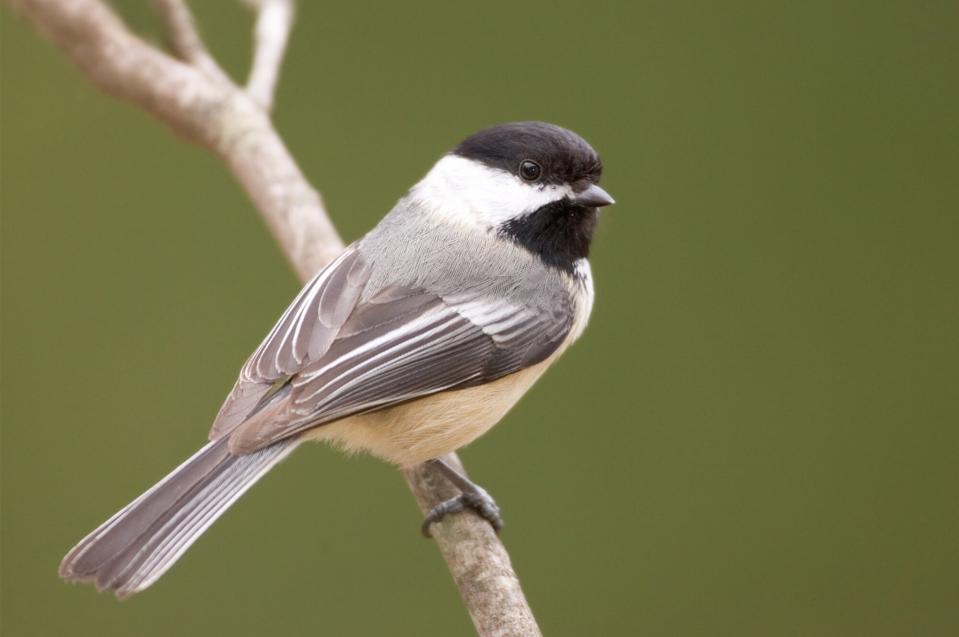
KenCanning / Getty Images
Black-Capped Chickadee
The Black-capped Chickadee gets its name from its unique black markings—a cap shape over its head and a patch under its chin—offset by its white cheeks. You can also easily recognize its song, says Causer. "Chickadees have one of the sweetest birdsongs: the mnemonic for its mating call is literally, 'Hey, sweetie,'" she says. "It also has a captivating alarm call that alerts chickadees, other species of birds, and even mammals of potential danger: 'Chicka-dee-dee-dee.' The number of 'dee's is variable—the more 'dee's on the call, the more urgent the danger."
How to attract them: "Making the caterpillar connection is key to attracting chickadees to your garden," says Causer—like other songbirds, chickadees require thousands of caterpillars each day to feed their nestlings. "Native trees and shrubs such as oaks, birches, native cherries, blueberries, and dogwoods are excellent host plants for caterpillars," says Causer. Since chickadees don't migrate in the winter, providing seed-bearing trees like birches, evergreens, and maples keeps them fed all year.
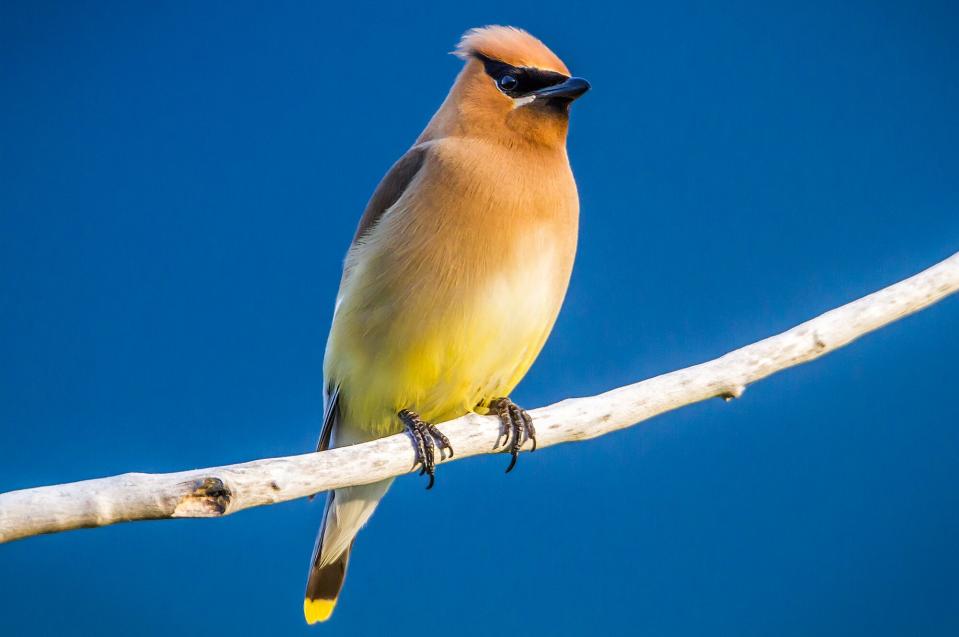
Troy Harrison / Getty Images
Cedar Waxwing
The Cedar Waxwing's ombré body darkens from tan to gray, creating a subtle background for noticeable details: a striking black strip across its eyes, bright yellow tips on its tail, and vibrant red tips on the wings. "Their high-pitched call reminds me of a dog whining and lets you know when they're in the garden," says Causer.
How to attract them: Cedar Waxwings thrive on berries from fruit-bearing native shrubs. "Flocks of the birds will come in to feast on the bounty when the fruit is ripe," says Causer. "Serviceberry, dogwood, winterberry, and viburnums top the list."
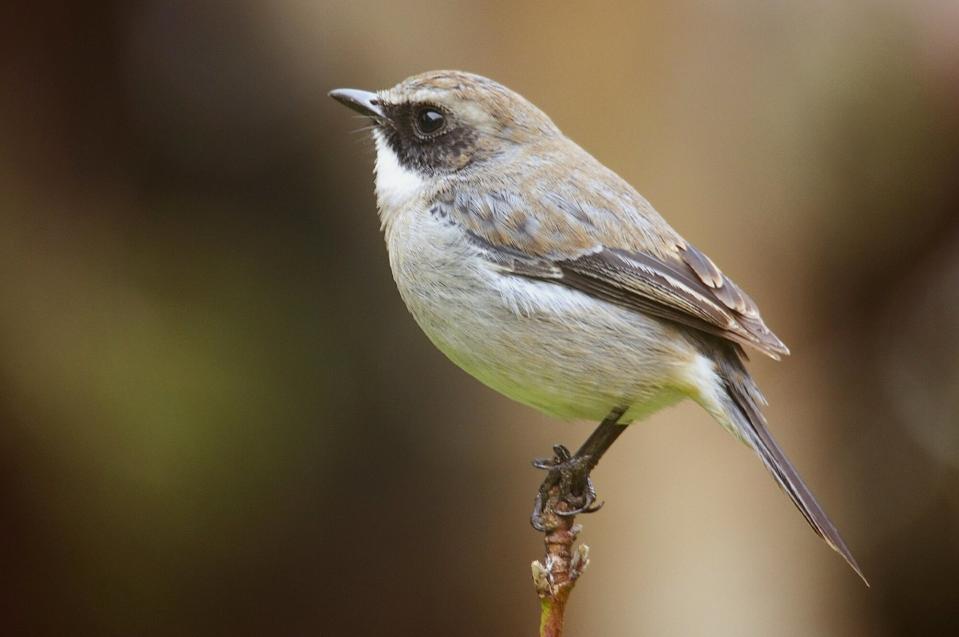
Wong Yung Pang / Getty Images
Eastern Phoebe
Listen throughout the day—not just in the morning—to hear the Eastern Phoebe's call: "Phoebes say their own name in a raspy, urgent tone of voice," says Causer. Though the birds have understated coloring, their more square-shaped heads and frequent tail-wagging movement are helpful in identifying them.
How to attract them: Eastern Phoebes catch insects mid-flight, instead of foraging for them on branches, so you need to provide plants will draw flying insects to your yard. "As an early spring migratory bird, early-blooming native plants are essential for attracting the pollinators upon which Phoebes feed," says Causer. "Native shrub willows, maple trees, and speckled alder are excellent choices."
Related: The Most Common Backyard Birds You'll See During the Winter
The South
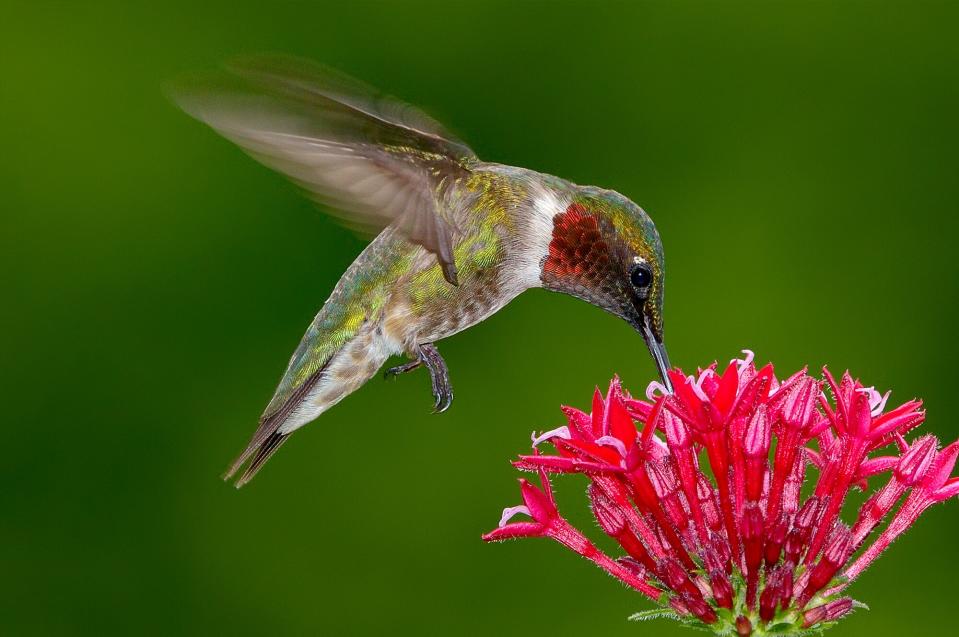
Larry Keller / Getty Images
Ruby-Throated Hummingbird
East of the Mississippi river, the Ruby-Throated Hummingbird is the only breeding hummingbird species; the male's red throats and shimmering blue-green backs make them easy to spot. Calls are a series of "mouse-like, twittering squeaks," but these birds are more famous for their speedy wing movements—more than 50 beats every second.
How to attract them: "Planting a wide variety of nectar-producing native flowers will attract them to your garden or yard whether or not you hang up a hummingbird feeder," says Stephanie R. Green of Strawberry Plains Audubon Center in Mississippi. "By planting a wide variety of native flowers that provide nectar for hummingbirds, you are also providing nectar sources for other pollinators such as butterflies and a host of native bees." Focus on flowers in bright shades of pink, blue, purple, and especially red; hummingbirds are a main pollinator of red flowers.
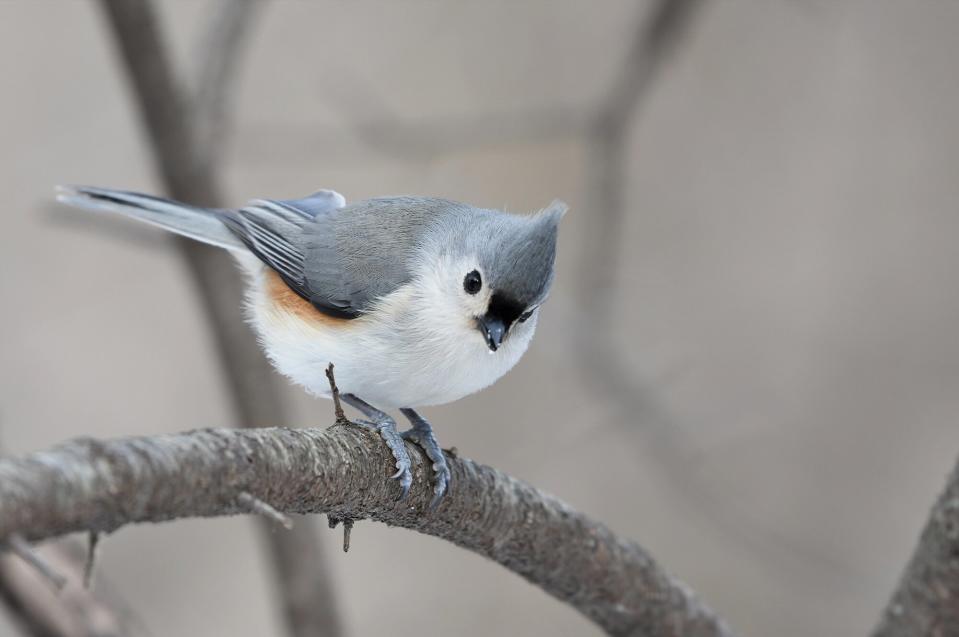
Greg Nadeau / Getty Images
Tufted Titmouse
The very common Tufted Titmouse, with its gray back, white stomach, and orange under-wing feathers, "will readily come to a bird feeder and provide lots of entertainment," says Green. "While not a flamboyantly colorful bird, they make up for that with personality. They have a song that sounds like they are saying, 'Peter, Peter,' but they also have a wide range of calls and other interaction scolds.
How to attract them: Mature, native trees, like oaks and hickories, provide these birds with the caterpillars and bugs they eat and feed to their nestlings. Creating a sheltered space for nesting can also entice these birds to set up their home in your yard. "It's important to keep in mind that they are cavity nesters," says Green, "so placing a nest box with an appropriate predator guard in a shaded corner of your yard will provide a place to raise their young."
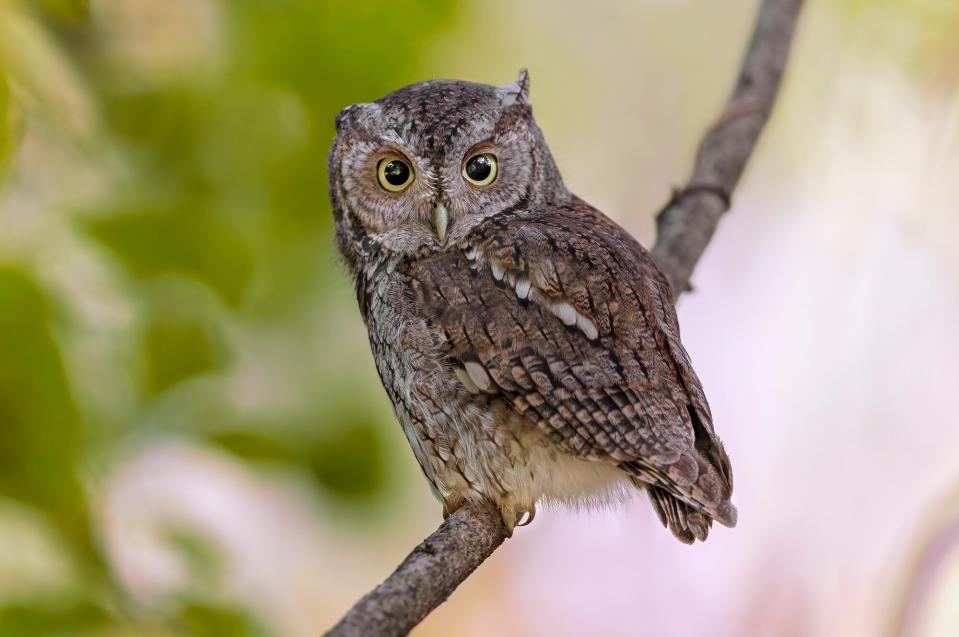
Scott Suriano / Getty Images
Eastern Screech Owl
The iconic Eastern Screech Owl doesn't exactly live up to its name: its sounds are more "whinnies and soft trills" than otherworldly screeches. "Their monotone trill at dusk is fun to listen to," says Green. This owl is also relatively small—about the size of a robin—and makes its nests in boxes or dead trees—while controlling your rodent population. "Screech owls eat small rodents, small lizards, and snakes," says Green, "as well as a bunch of grasshoppers and other bugs."
How to attract them: "This may seem like a strange choice, but they are really neat birds who are able to readily adapt to suburban environments as long as there are adequate nesting locations," says Green. "You can put up a Screech Owl nest box and be patient until a pair decide to move in. While you wait, you may have Great Crested Flycatchers, Carolina Wrens, and Red-bellied Woodpeckers all take turns at raising young."
Related: 7 Easy Ways to Attract More Birds to Your Backyard
The Southwest
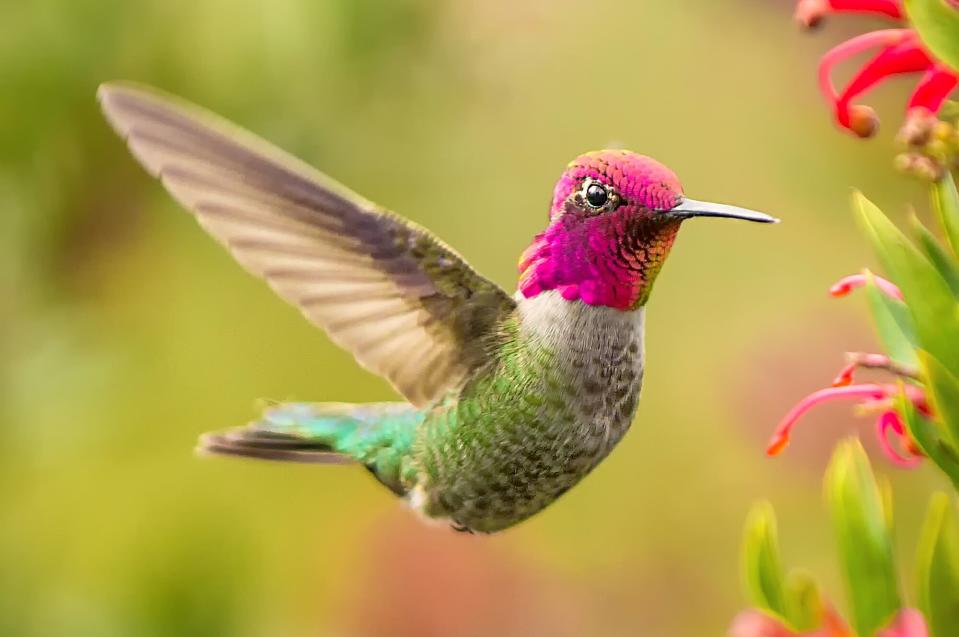
Shaurya Rastogi / Getty Images
Anna's Hummingbird
"The west is the best—for hummingbirds, that is," says Wise. "Unlike gardeners east of the Rockies that can expect one species of hummingbird, western gardeners can generally get from two to five species, depending on location." Look for Black-chinned Hummingbirds, Rufous Hummingbirds during their migration, and Anna's Hummingbirds (pictured here).
How to attract them: Like the Ruby-Throated Hummingbird, the western species thrive on the nectar from brightly-colored, tube-shaped flowers. "Hummingbirds are one of the easiest and most gratifying birds to attract to home gardens—plant tubular flowers such as penstemon, scarlet gilia, autumn or pineapple sage, and chuparosa," says Wise. "Hummers prefer red-colored flowers, but will also make use of different hues as long as the flower shape is correct for their bills."
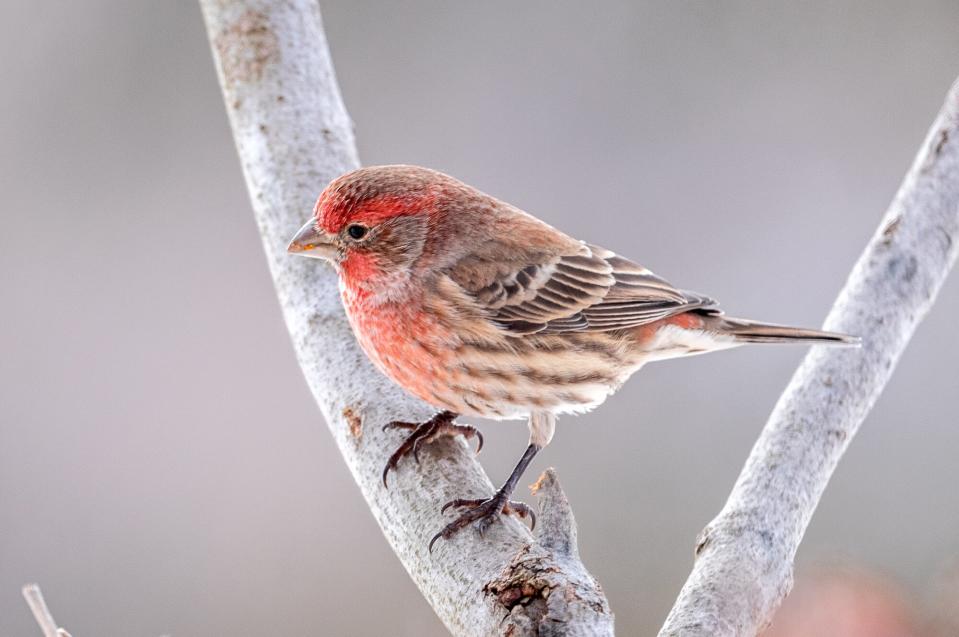
AGoodeLife / 500px / Getty Images
House Finches
Unlike their lemon-colored relatives, the American and Lesser Goldfinches, the male House Finch has a strawberry-toned head and breast. Listen for "an extensive series of warbling notes ending in a zeee, canarylike but without the musical trills and rolls," according to Audubon.org.
How to attract them: "These colorful seedeaters appreciate large flowered species like asters, coneflowers, and sunflowers—all of which are easy to grow," says Wise of the Lesser, American, and House finches. "As a bonus, these flowers attract butterflies and add additional color and interest to the home garden."
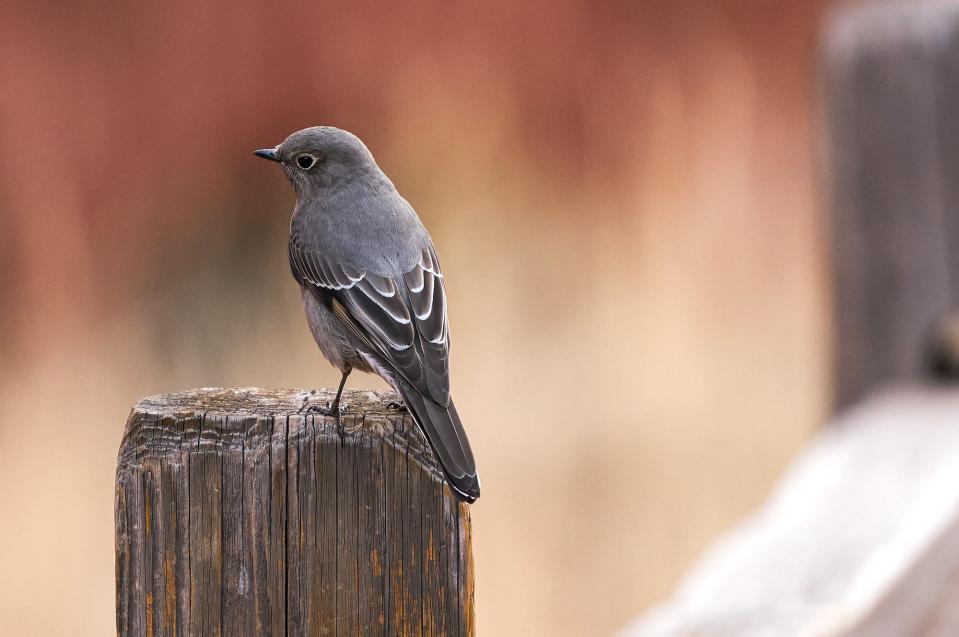
MichaelSchmitz / Getty Images
Plumbeous Vireo
The Plumbeous vireo feeds on insects—caterpillars, wasps, bees, spiders—found on the upper branches and twigs of your backyard trees, and performs a "husky chatter" as its most common call. It's part of a migratory family that also includes the Bell's and Warbling Vireos.
How to attract them: Make sure your landscaping focuses on the inclusion of native species. If you see them, "they are a sure sign that you are on the right track in planting for birds!" says Wise. "This family of migratory insect-eaters requires a native tree component to the garden which they will use for resting and refueling." Planting the native trees that draw these birds to your yard will also entice other insectivores to make their home in your landscaping, as the trees provide the bugs that these animals evolved to use for nourishment.
Related: The Best Colors to Attract Birds to Your Backyard (and One Color to Avoid)
The Great Plains and Midwest

Arthur Morris / Getty Images
Indigo Bunting
Even amateur birdwatchers should have no trouble identifying an Indigo Bunting. "As the name implies, it's a brilliant blue color—a very uncommon color in nature," says Daniel Suarez of Audubon Great Lakes. "Once you see an Indigo Bunting, you know you're seeing something special." Its distinctive song, which Suarez describes as "a rapid, excited warble" also has an uncommon characteristic: Each tone in the song is repeated twice in a row.
How to attract them: Indigo Buntings eat seeds, insects, and berries. Plant fruiting shrubs and maintain mature trees for them to nest in.
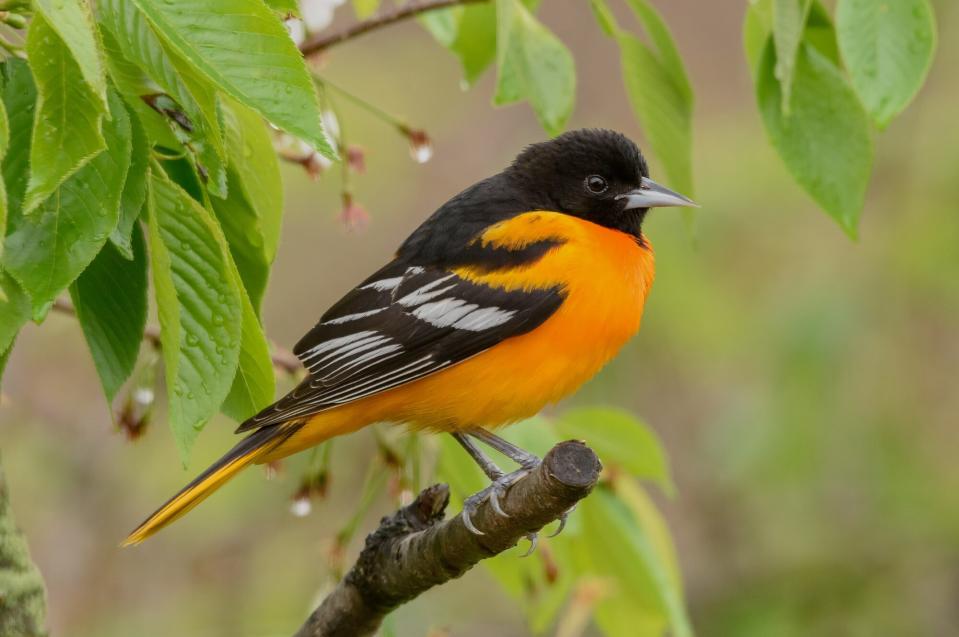
Larry Keller / Getty Images
Baltimore Oriole
The "brilliant, flaming" orange of the Baltimore Oriole is also hard to miss; its black body and head make the vibrant accent color even more apparent. (The bird is named for Lord Baltimore, a nobleman from the 1600s who included both black and orange on his coat of arms.) Seeing their distinctive nest—which looks like a hanging basket suspended from a tree branch—is a sign this bird is living in your yard, says Suarez, as is their "clear, flute-like song."
How to attract them: Baltimore Orioles like mature trees, especially cottonwood and elm, says Suarez, as well as sugar water and orange slices; leaving out the sweet fruits and water can draw them to your yard.
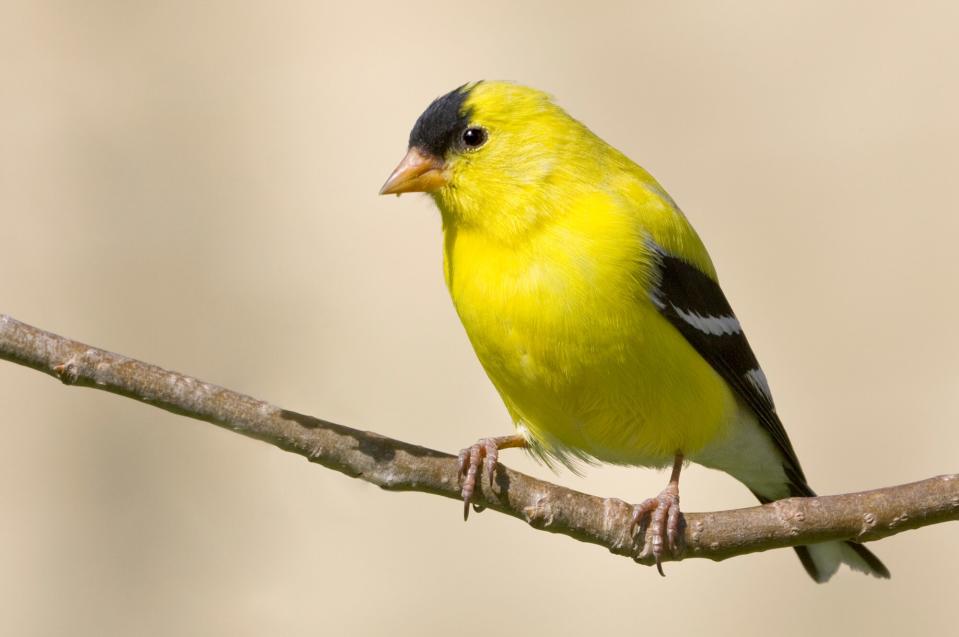
Scott Smith / Getty Images
Ameircan Goldfinch
The citrus-colored American Goldfinch sings "a sweet, soft" kind of call—which sounds like the phrase, "per-chick-o-ree"—while flying in a very specific pattern: Rapidly flapping its wings, sinking down, and flapping to rise again in a repeating U-shape. "It's easy to tell, even if the bird is far away," says Suarez.
How to attract them: Goldfinches like plants that produce fluffy seeds, like thistles and asters, and happily eat the seeds provided in feeders. You'll also find them foraging for seeds in patches of wildflowers and weeds.
Related: The Best Bird Feeders for Your Backyard
The Northwest
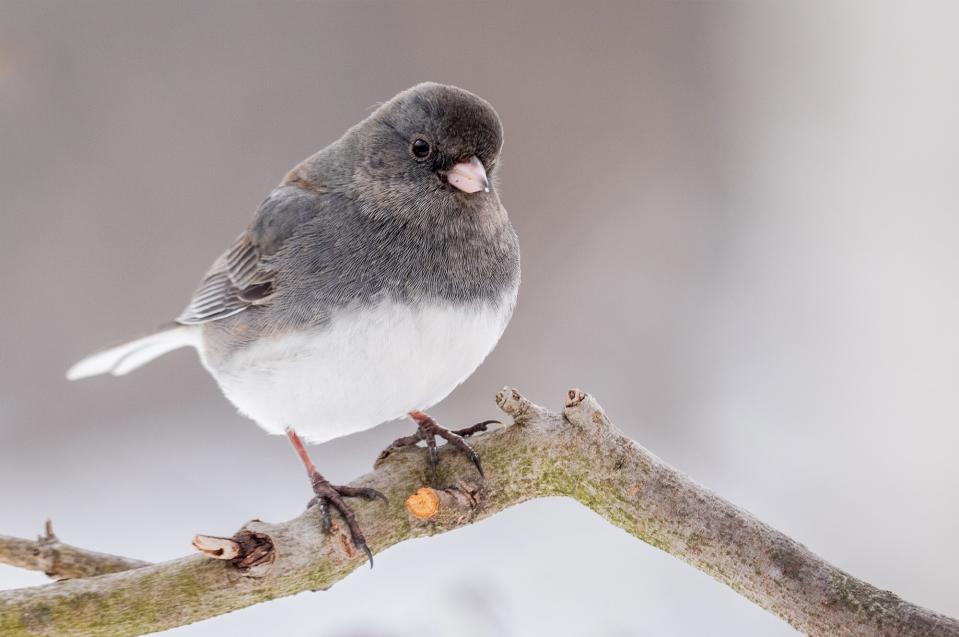
AGoodeLife / 500px / Getty Images
Dark-Eyed Junco
Dark-eyed Juncos found in the eastern part of the country are only gray and white, but their counterparts in western flocks sport a variety of reddish patterns as well. Audubon Portland puts their population numbers at 630 million across the country, making it likely that you'll spot one foraging on the ground for seeds, or that you'll hear its single-pitch "ringing, metallic trill."
How to attract them: Dark-eyed Juncos rely on a diet that primarily consists of insects in the summer and seeds from weeds and grasses in the winter. Since they don't migrate, planting native fauna that provide year-round food can encourage them to stay in your yard, even in the winter.
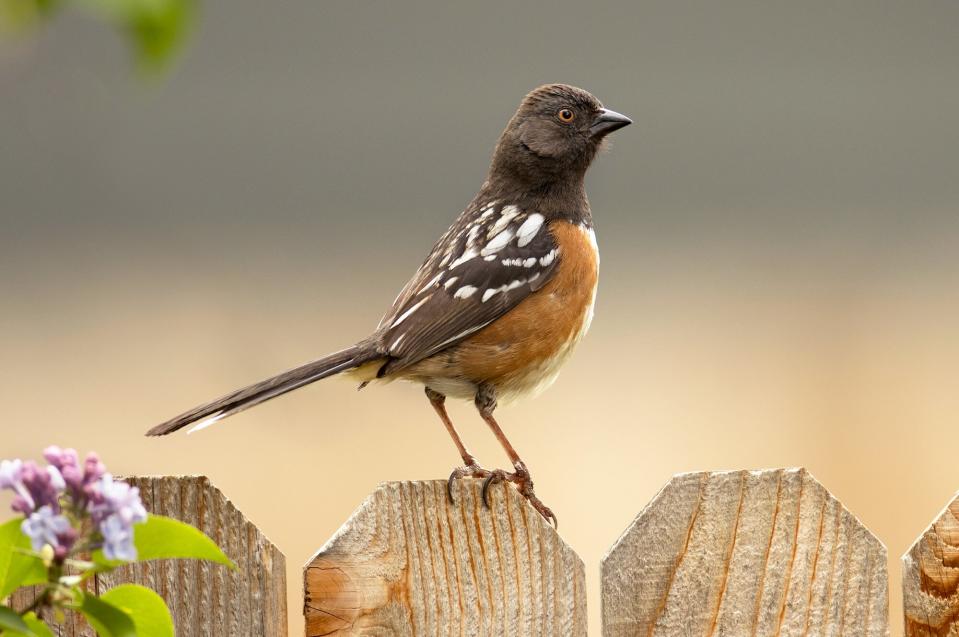
milehightraveler / Getty Images
Spotted Towhee
The Spotted Towhee sports a striking color pattern: a black head and back, a white breast with red-orange feathers along its side, plus high-contrast white spots on black wings. Audubon.org describes its varied song as a "long, buzzy cheweeeee" and its call as "an inquisitive meewww." They typically nest on the ground under shrubs, or in the lowest branches of bushes.
How to attract them: Choose plants that provide a variety of food sources for these foragers, including beetles, caterpillars, moths, spiders, snails, and millipedes, and acorns, seeds, and berries.
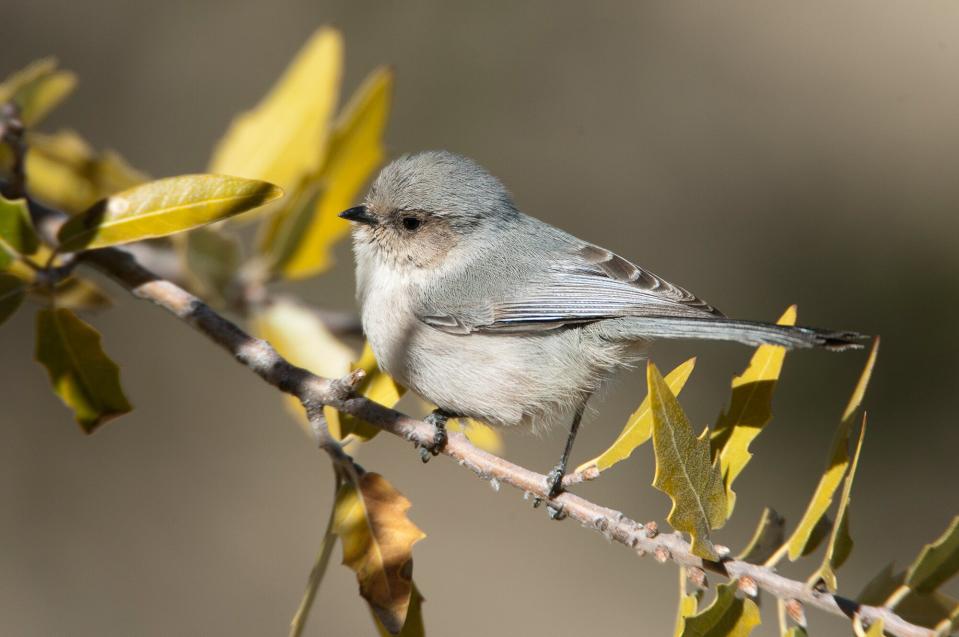
Stan Tekiela / Getty Images
Bushtit
Tiny, fluffy Bushtits show off subtle shades of gray, white, taupe, and tan, which can make them hard to spot—until a flock of three or four dozen take flight at once to move to another tree in single file. These birds forage for small insects in trees and branches, even sometimes hanging upside done to reach the tiniest bugs in pine needles or on the undersides of leaves.
How to attract them: Bushtits prefer wooded, brushy areas, including "chaparral, oak forest, pinyon-juniper and pine-oak woods, streamside groves, and well-wooded suburbs and city parks." Prioritize mature trees and groves to provide appropriate habitats.

